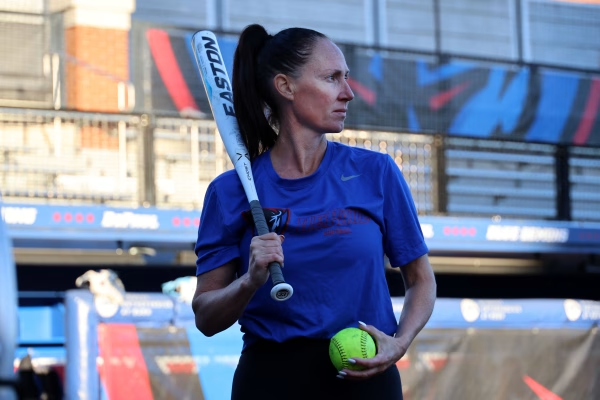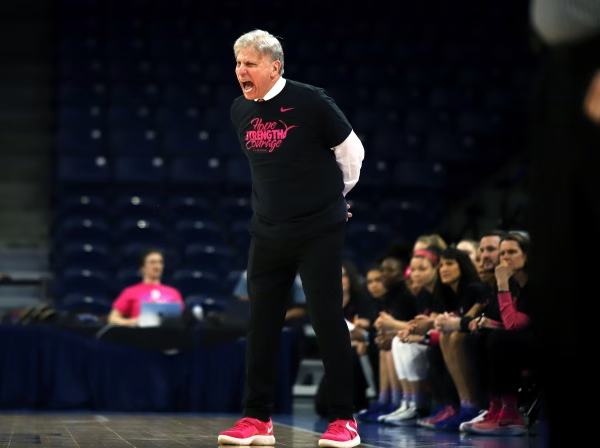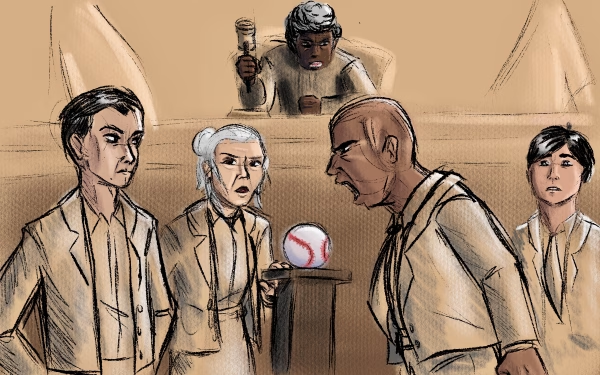End of the decade: Explosive, efficient offense defined the 2010s in sports
The 2010s gave way to drastic, complex changes in the world of professional sports. As teams got smarter, they were more willing to apply technological and analytical advancements to their sports. That has led to increased efficiency on offense and, in turn, higher numbers on offense.
NFL passing numbers have increased steadily since 2005, when the league averaged 205.3 passing yards per game. Whereas league-wide passing averages sat at 221.6 yards per game in 2010, they have risen to 237.8 in 2018, at one point reaching as high as 243.8 in 2015.
“It’s all about efficiency now,” said Chris Emma, who covers the Chicago Bears for 670 the Score. “The difference now from where it was 10 years ago is that coaches are smarter. They understand the why and the reasons behind offense now, behind statistics.”
Several factors have contributed to this rise in passing, perhaps the most important being schematic innovations. Teams are less inclined to run the ball now, simply because a low-yardage payoff is so much less valuable than the possible payoff of a pass.
“Coaches understand they’re best suited taking these six-plus yards per pass than the four-plus yards per rush,” Emma said.
Teams have also gotten smarter and better at developing quarterbacks. The old model was for a quarterback to sit behind the starter for as long as possible while he learned the ins and outs of an extremely dense and complicated playbook. The idea, traditionally, was to mold a quarterback to fit a scheme.
That model has been largely inverted, partly because more and more coaches have realized they literally don’t have the time to develop a quarterback with the old model; the collective bargaining agreement signed in 2011 mandated teams to only 14 padded practices per year and barred teams from running two-a-day practices in training camp. In a nutshell, the nuances which filled previous playbooks could no longer be properly implemented and taught in practice the way it had been before, so coaches had to simplify their playbook and make it easier to learn.
But it is also because of a changing talent pool. As more college programs switched to a spread offense antithetical to pro-style systems, quarterbacks entering the league were far less prepared to handle an NFL playbook. With fewer “pro-style” quarterbacks coming up the ranks, the onus was put on coaching staffs to adjust their philosophies.
“More specifically, there are fewer reads,” Emma said of how teams’ schemes have changed. “Less time in the pocket, getting rid of the ball quickly. (When) you have a young quarterback, you want them to get that ball out of their hands in only a couple seconds or so.”
The Washington Redskins were one of the first teams to fully embrace this approach when they drafted Robert Griffin III in the 2012 NFL Draft. Instead of forcing Griffin to change into something he’s not for the sake of “the system,” Washington embraced his unique skill set as both a runner and thrower, incorporating concepts from his previous playbook that made him one of the league’s most electrifying players until injuries derailed his career as a starter.
“It’s fascinating to look back on that staff, especially that franchise that’s had so much dysfunction for years,” Emma said. “It was a brilliant coaching staff.”
Washington set an example for teams to adapt to their quarterback’s strengths, and doing so has led to young quarterbacks getting much better much faster; five of the top 10 leaders in passing yards this season are 26 years old or younger, and Lamar Jackson, who has the second-most touchdown passes, is only 22.
With quarterbacks being better at a younger age, comparisons to past generations for young passers has to come with asterisks. The bar to clear is now higher than before; Bears quarterback Mitchell Trubisky holds multiple rookie records and is already in the franchise’s top-10 in touchdown passes, yet his production and performance don’t meet today’s standards, and his team may go in a different direction at the position.
Comparing previous generations of quarterbacks to today’s is nearly impossible, as NFL single-season records have been shredded over the past decade. The top eight single-season passing yardage records were all set in the 2010s, with the highest being set by Peyton Manning in 2013 at 5,477. 12 quarterbacks finished 2018 with over 4,000 yards; only six did so 10 years earlier in 2008.
NFL trends are cyclical, and defenses will sacrifice size for athleticism as more defenses work to counter modern aerial attacks. The Baltimore Ravens have zagged to a run-heavy, big-bodied approach to offense, and they currently have the most efficient offense in the league by DVOA. However it plays out in the future, the 2010s were defined by offensive innovations that made way for historic passing performances.
High increases of offensive output are not unique to just the NFL, though. Both the MLB and the NBA saw dramatic number spikes in the 2010s, and both were driven by different approaches to offense.
Baseball was revolutionized by the Oakland Athletics’ quest for maximizing value in the early 2000s. The subsequent release of Michael Lewis’s “Moneyball” popularized their approach to analytics and, since then, advanced metrics comprised of high quantities of data have become the driving force in team building.
All the lessons from “Moneyball” have been learned and every MLB team has a high degree of analytics in their front offices. Today, teams value the home run more than anything. Because of a vast confluence of factors driven by technology and philosophy, home run numbers exploded in the decade, rising from 4,613 in 2010 to 6,776 in 2019. Teams collectively hit more home runs now, with the five highest single-season team home run records coming in the last two seasons alone.
Kevin Powell, who covers the Chicago Cubs and White Sox for WGN Radio, attributes a great deal of it to technology.
“I was covering Spring Training for the past four or five years now and, over the past couple years, I’ve started to see more and more of these cameras that they set up pitchers hitters in the cage,” he said. “They do it for the pitchers. But these are just more tools for them where, the ins and outs of all the technology, I’m not exactly sure. But the jist of it is that it’s a way for players to analyze their games.
The Cubs, when they redid their clubhouse, we toured it and they have an entire laboratory that looks like, I mean it’s like a NASA computer lab.”
Swinging for the fences was once considered the wrong way to go about an at-bat. A batter was often taught to swing for contact and avoid strikeouts at all costs. But as front offices realized just how valuable the long ball is, the possibility of striking out was less important, as all it took was one hard swing to put a run on the board.
“People have just different philosophies now about strikeouts,” said Jon Greenberg, editor-in-chief at The Athletic Chicago. “And that’s something that’s really expanded, probably in the past 10 years – that strikeouts weren’t the worst thing in the world like people used to think they are. And that an out is an out is an out.”
This tradeoff in risk has led to an increase in strikeout numbers, with MLB setting league wide strikeout records for the 12th year in a row this past offseason.
The ultimate driver behind home runs boils down to the value of it. Striking out while trying to crush the ball eventually becomes worth once contact is made. It’s a similar thought in the NBA, where teams have fully embraced the payoff of a three-pointer as opposed to a mid-range jumpshot.
“Teams often will sit there and say, ‘I will miss more shots, yet with the shot value being three over the value over two, in the long run, that lower percentage actually still outweighs a two-point field goal attempt,’” said Phil Meyers, a professor at DePaul University and former 15-year analytical evaluator for Synergy Sports.
“It’s a lot like if you compare it to baseball, where teams don’t mind striking out, giving them outs that way swinging for the fences.”
The “three point revolution” has exploded scoring in basketball, with last season’s league average of 111.2 points per game being a near 11 percent increase since only the 2009-2010 season. The backbone of the Golden State Warriors’ five-year dynasty was their ability to take over any game with historic three-point shooting from the likes of Stephen Curry, Klay Thompson and, eventually, Kevin Durant.
The ideal characteristics and duties of the big man have changed as well, Meyers pointed out. No longer do teams look for a bruising center to work in the low-post. Now, centers are expected to also space out and do more than back down opposing defenders.
“The three-pointer, for many generations, was looked at as a bonus shot,” Meyers said. “This day and age, unless you’re like a traditional post-center, which we don’t see much of anymore, almost every single player in the NBA is expected to at least hit a wide-open three-pointer if presented the opportunity.”
After the Miami Heat’s early-decade reign ended, Golden State stepped into the fold and won in a very different way; instead of acquiring superstar talent as Miami did when they signed LeBron James and Chris Bosh, they turned to spacing the floor and hitting threes at a high clip with players already in their system, a model they sustained when acquiring Durant. Teams always try to copy the champs in sports, and in the NBA, this led to the increase in floor spacing and three-point attempts.
“You either try to emulate the team and do it better than they do,” Meyers said, “or you counteract that team, whoever the champion or contenders are at that time, and defeat them that way. So it’s emulate or counteract. And that’s what the ebbs and flow of sports are.”
So far, teams have tried to emulate. Total three-point attempts have increased every season since 2012, growing from 49,067 in 2012-2013 to 78,742 this past season. Perhaps teams may counteract by going big in size, as the 76ers did to an extent this offseason, but it appears a return of “the old ways” may still be far away.
The decade in sports was defined by offense, and access to information and increasing openness to analytically-driven philosophies should push this trend further. Eventually, a correction will come, but it may take a while. But, maybe further innovation will push these offensive numbers beyond what we thought was possible.











